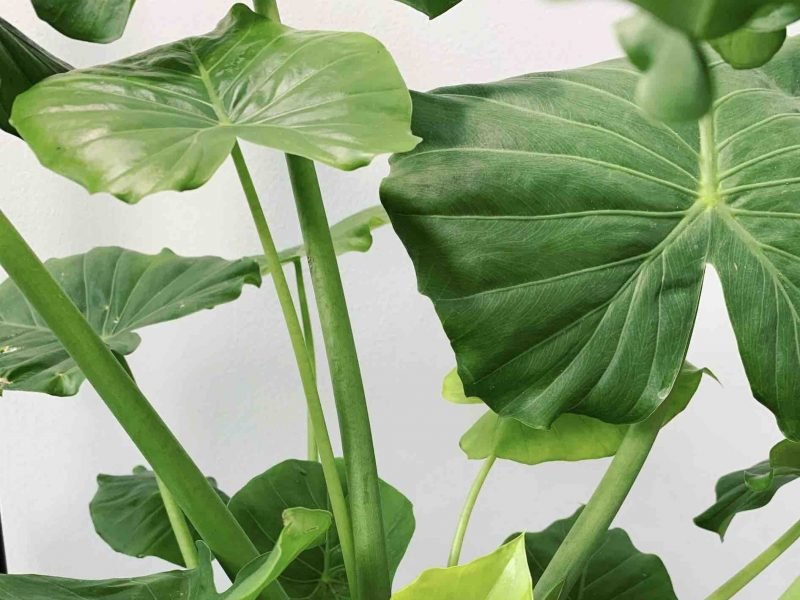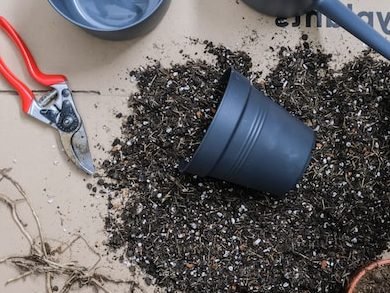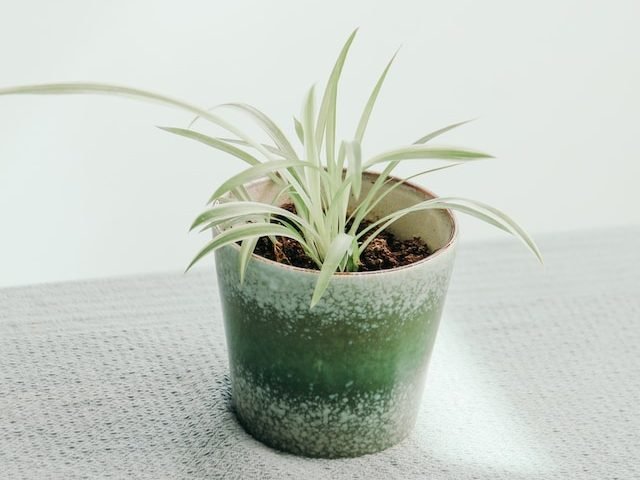
Loved for their larger than life leaves, Elephant Ear Plants are a great statement piece for every room. There are so many reasons why you might want to propagate your Elephant Ear Plant, from gifting cuttings to friends and family, selling them online or simply multiplying your houseplant collection. In this post, we will go through how to propagate an Elephant Ear Plant, giving you a step by step guide as well as all of our top tips along the way.
Is propagating an Elephant Ear Plant difficult?
Although their care requirements can sometimes be difficult to manage, Elephant Ear Plant propagation is a breeze. There aren’t that many steps involved or opportunities for things to go wrong if you follow the right steps. Another important thing to minimise any issues is to keep a close eye on your plant after the propagation process to make sure that the care and environment suit their needs as they can be quite sensitive for a few weeks after division.
What methods can I use to propagate my Elephant Ear Plant?
The only downside to the Elephant Ear Plant propagation process is that there is only really one good method to do it; division of the mother plant. This means that you need quite a mature plant to propagate. Either you have a plant that has several natural divisions, or you’ll need to actually slice the plant in two, but more on that below!
How to propagate an Elephant Ear Plant through the division method
Remove your Elephant Ear Plant from its pot
Before removing your Elephant Ear Plant from its pot, it’s important to check the bottom of the pot to see if the roots are growing out of the drainage holes. If they are, simply pulling your plant out of its pot will break these roots. Instead, carefully untangle them and thread them through the drainage holes. If they aren’t coming free, you might need to cut through the pot to release your plant.
Shake off the soil from the root system
You need to be able to locate the various offshoots of your Elephant Ear Plant to propagate it so remove the bulk of the potting mix from the roots. A good way is to loosely run your fingers through the root system, shaking the roots slightly to separate them.
Separate your Elephant Ear Plant into sections
It’s OK if you need to cut through the odd small and thin root to do this (make sure you use pruning scissors though). You want to avoid cutting too many large roots as this can have an impact on your plant’s health and maturity.
If your Elephant Ear Plant only has one central section, then in order to propagate it you’ll need to carefully slice this in two. Make sure that both sections have strong roots attached as this will significantly increase your chances of successful propagation.
Pot your new plant in a high-quality potting mix
Place your mother plant back in its pot and add a little fresh potting mix to fill the gap where your new plant used to be. If you have removed quite a lot of your mother plant, you might want to downsize the pot to avoid issues with drainage.
Then pot your new Elephant Ear Plant in fresh potting mix, making sure it has some room to grow into.
Continue normal Elephant Ear Plant care
That’s everything! We told you it was an easy process. You can now begin to care for your Elephant Ear Plant as you would your original mother plant. Make sure to keep a close eye on it for a few weeks though to make sure that there aren’t any issues creeping up. Give your new Elephant Ear Plant plenty of sunshine and warmth to encourage new root and leaf growth.
Is it possible to propagate an Elephant Ear Plant from a single leaf cutting?
Unfortunately, it’s not possible! We are as gutted as you! There needs to be a central part of the plant rather than just a stem or leaf which means that division is the only real option.
What time of year is best for Elephant Ear Plant propagation?
This is where the division method gives you a real benefit as you can pretty much propagate all year around. For other houseplants, where you might be propagating them with stem cuttings or leaf cuttings, you will want to do it in spring so that the warm sunny months aid root growth. Doing it in the warmer months does decrease some of the risks for Elephant Ear Plant propagation but it’s not essential.
This is everything you need to know to propagate your Elephant Ear Plant, before you know it, you’ll have plenty of new plants populating your home.
To learn more about how to care for your plant once propagated, check out our Elephant Ear Plant care guide.















